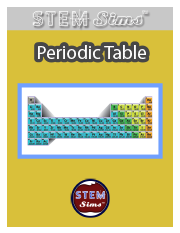What is the periodic table?
The periodic table is a tool created by Dmitri Mendeleev to organize the common elements. The table arranges elements in a pattern that can be used to predict the chemical and physical nature of the elements.
How is the periodic table arranged?
The elements on the periodic table are arranged in increasing atomic number, which is the number of protons in an atom. The table also organizes elements based on their electron configurations and their properties.
What are the major element classifications on the periodic table?
Elements are broadly classified on the periodic table into metals, non-metals, and metalloids. Other classification schemes exist on the periodic table, such as classifying the noble gases (group 18), the halogens (group 17), the alkaline earth metals (group 2), and various other groups.
What are groups on the periodic table?
Groups, also called families, are the vertical columns on the periodic table. Elements within the same group typically have similar chemical properties since the elements have the same valence electron configurations. For instance, all the members of Group 1 in the ground state have one electron in their outermost energy level. All the members of Group 16 have six electrons in their outermost energy level. There are 18 total groups on the periodic table. Generally speaking, moving down a group, the atoms of the group atomic radii increases since another energy level is added moving down each period within a group.
What are periods on the periodic table?
Periods, also called rows, are horizontal patterns on the periodic table. There are seven periods on the periodic table. Element properties typically become more different the farther away the elements are on a period. The period number also gives an indication of the number of energy levels in the atoms of a given element when the atom is in the ground state. So lithium, which is in the second period, would have two energy levels when the atom is in the ground state. Generally speaking, the atoms in the period atomic radii decreases moving from right to left across the periodic table. This is due to the greater effective nuclear charge felt by the valence electrons, which pulls the outermost electrons in closer to the nucleus making the overall radius of the atom smaller.
What are the major ways elements were named when discovered?
A number of different methods have been used to name the elements on the periodic table. Some elements were named based on where or by whom they were discovered. Other elements were named using Latin or Greek terminology that described the element's characteristics or uses. Still other elements were named to honor important scientists. Lastly, some elements were named after astronomical or mythological objects or ideas.
What is electronegativity?
Electronegativity (EN) is a relative measure of the desire an atom has to attract electrons. The EN scale ranges from 0 (no desire for electrons) to 4 (the greatest desire for electrons). Nonmetals tend to have a greater EN value than metals since nonmetals tend to gain electrons to achieve the octet, while metals tend to lose electrons to achieve the octet electron configuration. Generally, the smaller the atom, the greater the desire for electrons since the electrons are closer to the positively-charged nucleus and are shielded by fewer electrons in the electron cloud.
 The periodic table was first proposed and widely accepted around 1869. The table provides a way to quickly predict the general chemical and physical properties of elements based on their atomic structure. Your challenge is to master the three Periodic Table games presented in this simulation and achieve the highest score possible. Be like Mendeleev and master the table.
The periodic table was first proposed and widely accepted around 1869. The table provides a way to quickly predict the general chemical and physical properties of elements based on their atomic structure. Your challenge is to master the three Periodic Table games presented in this simulation and achieve the highest score possible. Be like Mendeleev and master the table.

